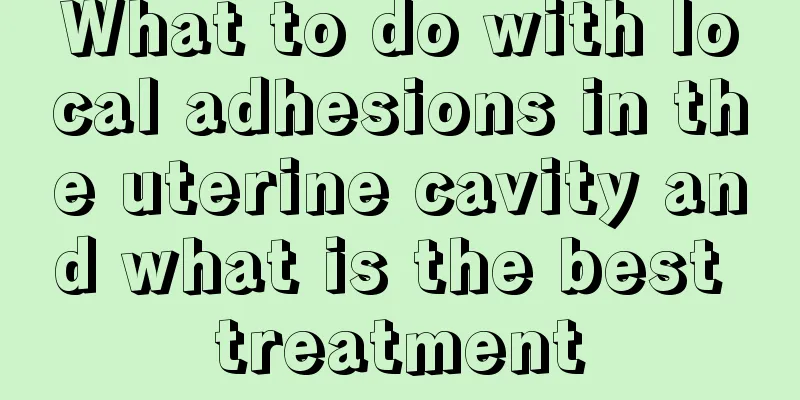What to do with local adhesions in the uterine cavity and what is the best treatment

|
When local adhesions occur in the uterine cavity, most friends have a history of miscarriage. The disease of local intrauterine adhesion needs to be treated in time, otherwise it will pose a threat to the health of the uterus and may even cause infertility. treat: 1. Use a dilator to dilate and then insert the intrauterine contraceptive device. However, this operation is blind and cannot restore the original uterine cavity shape, and the incidence of re-adhesion is high. 2. Hysteroscopy integrates diagnosis and treatment, and some difficult gynecological diseases can be solved intuitively, simply and safely. Membranous adhesions and fibromuscular adhesions can be separated under hysteroscopy or removed with surgical scissors; while dense connective tissue-like adhesions require electroresection under B-ultrasound or laparoscopic monitoring. After the operation, an intrauterine contraceptive device or protein glue is placed to prevent re-adhesion, so that the patient can resume menstruation and achieve the purpose of fertility. Notice: 1. Regarding estrogen, many surgeons in the past gave continuous use of estrogen and progesterone after surgery to promote endometrial growth. I believe this is unnecessary because a large amount of exogenous hormones normally entering the body will inhibit the production of endogenous hormones through negative feedback, turning a person in a physiological state into a pathological state. 2. Application of electrosurgical cutting: electrosurgical cutting can easily form new trauma and cause a new round of adhesions. Try to use cold instruments to separate adhesions, and plasma knife is the best. 3. The number of operations generally depends on the situation. It is not limited to one time separation. In other words, it is better to perform the operations in batches. 4. Uterine distention fluid: saline is better than glucose. Intrauterine adhesions usually cause menstrual abnormalities, such as oligomenorrhea, and severe adhesions can cause amenorrhea. If adhesions block part of the uterine cavity, the patient may become pregnant, but is prone to miscarriage, premature birth, ectopic pregnancy, intrauterine fetal death, placenta accreta, placenta adhesion, etc. If the patient is completely atretic, he or she may show infertility. It is recommended that you have an endocrine check on the 2nd to 5th day of menstruation, and a hysteroscopy after the menstruation is over to determine whether there are any endocrine and uterine cavity factors. |
<<: How can a woman correct her crooked legs?
>>: What are the benefits of taking royal jelly during menopause?
Recommend
What's wrong with bleeding in the lower body when I'm two months pregnant?
Pregnant women are more prone to accidents due to...
Normal blood pressure range for women
Blood pressure is a common health indicator, and ...
Does taking too much progesterone have any effect on the fetus?
In the first three months of pregnancy, if you ta...
All patients with liver disease, please take note: low albumin levels must be taken seriously!
Albumin, also known as serum protein, has the sma...
The temperature has dropped sharply recently, reaching 0℃ at most! Check the 8 risk factors for stroke quickly
According to China Weather Network, from this Sun...
What is the reason for dark red menstrual blood
When your period comes, are you always concerned ...
I get scared as soon as I enter the elevator. Is this also a psychological problem?!
Review expert: Li Xianhong, national second-level...
How to breastfeed without sagging breasts
Because women's breasts are mostly composed o...
Can fermented rice dumplings enlarge breasts?
Fermented glutinous rice balls are actually a com...
How to remove pregnancy spots?
Stretch marks are a fact that female friends ofte...
How to treat congenital uterine displacement?
The uterus is known as the palace of fertility, a...
Urinary tract infection in women
Due to the special physiological structure, compa...
I have pregnancy symptoms but can't detect it.
We should all be aware of the common symptoms of ...
What to do if pregnant women have dry and cracked feet
It is very common for pregnant women to have dry ...
What is the luteal phase of menstruation?
For women, they may often hear terms such as ovul...









